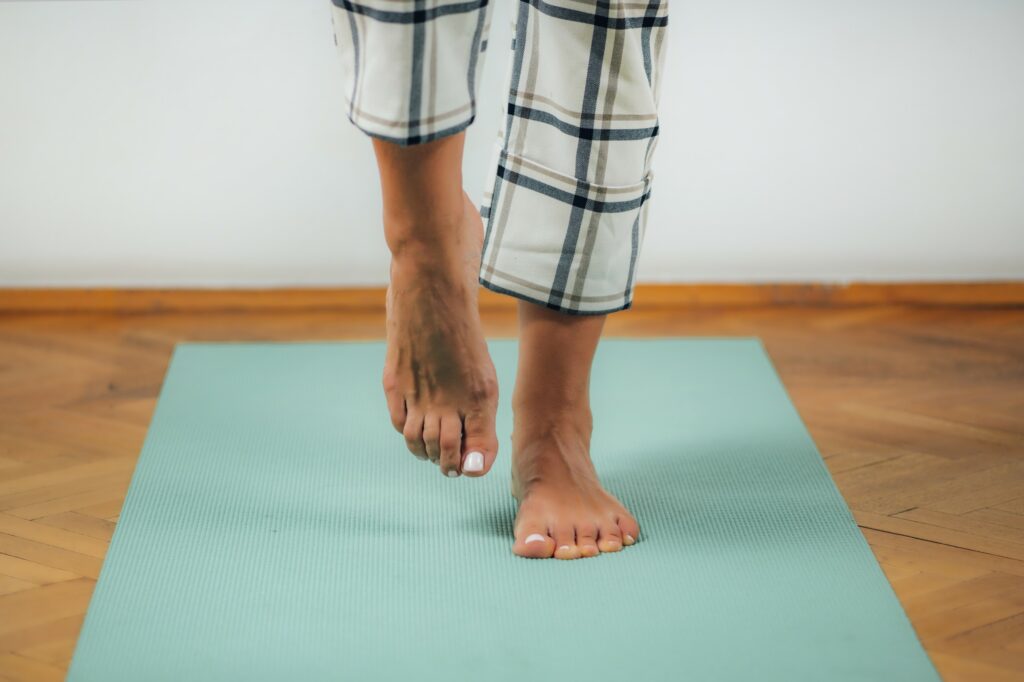Try This Simple 10-second Test to Check Your Overall Health

How long can you stand unsupported on one leg? If the answer is 10 seconds or more, congratulations. The chances are you have a good few years still left to live.
If the answer is less than 10 seconds, you might want to take steps to ensure you can do so.
Read More »The reason is that the one-leg standing test is not as much a test of balance—which it is—but, according to the scientists in Brazil, as much a test of a person’s general health.
The researchers therefore suggest that this simple and safe balance test should be part of every routine health care check for adults. They explain that our ability to balance decreases quickly after the mid-50s. As a result we are more susceptible to falls and other outcomes that are averse to our health.
Yet balance, unlike various forms of exercise such as aerobics, is seldom recognized as an important element of fitness as well as general health.
Those who fail the test might want to take steps to become healthier. Exercise, balance classes, eating right, and taking part in social activities might all help to ensure that you can pass the stand-on-one-leg test and therefore look forward to a longer life.
Testing the Theory
To test their theory, the scientists at Clinimex Medicina do Exercicio in Rio de Janiero looked at whether standing on one leg for 10 seconds is linked to death from any causes over the following 10 years and whether it adds any relevant helpful information beyond the ordinary statistical information itself.
They conducted their test on 1,702 people, 68% of whom were men, aged from 51 to 75, with an average age of 61. The tests ran from 2008 to 2020.
During the course of the tests, the researchers measured each person on their waist size, skin fold thickness, and weight. They also collected details of their medical history.
The One-leg Standing Test

As one of the tests, participants tried to stand on one leg for 10 seconds without any extra support. They were told to place the front of their free leg on the back of the opposite lower leg. At the same time they needed to keep their arms at their sides. They were instructed to look straight ahead.
Each person was allowed to try standing on each leg up to three times on each foot.
The result? One person in every five participants failed the test.
Failure Was Higher With Age
An interesting aspect of the results was that the percentage of those who failed the test was higher with age. Here is how it went:
• Among those aged 51 to 55 almost 5% failed
• When it came to those aged 56 to 60, about 8% failed
• Of those between 61 and 65 the failure rate rose to 18%
• More than one in three—37%—of those aged from 66 to 70 failed.
• More than half of the participants aged 71 to 75 were unable to complete the test.
Measured Against Death Rate
During the course of the test 123 people in the group died.
The death rate among those who failed the one-leg standing test was significantly higher than among those who passed the test—17.5% as against only 4.5%. The deaths included a third who died of cancer, a third who died from heart disease, 9% who died from respiratory disease, and 7% from complications from COVID. No clear material trends were shown in the deaths between those who passed the test and those who failed.
Death Risk Was More Than 80% Higher
Overall, after accounting for sex, age, and underlying heath conditions, those who were unable unsupported to stand on one leg for 10 seconds faced an 84% greater risk of dying from any cause within the next 10 years.
Generally those who failed the one-leg balance test were in poorer health. Many had heart disease, were obese, had high blood pressure, or had too much fat in their blood.
In addition, the researchers found that type two diabetes was more common in the group who died. They comprised 38% of those who failed the test compared with 13% who passed the test.

Other Factors Could Apply
Because the study is an observational one, the causes of death could not be established, says Dr. Claudio Gil Araugo, author of the study. In addition, because all those who took part were white Brazilians, the findings might fail to be generally applicable to other nations and ethnicities.
In addition, information on factors that could potentially be applicable were not all available. Such factors included levels of physical activity, history of falls, smoking, diet, and drug use were all unavailable.
Rapid Feedback
Nevertheless, the 10-second balance test provides objective and rapid feedback both for the patient as well as health professionals in regard to static balance, Araugo adds.
The test adds information that is useful in regards to the risk of death in middle-aged as well as older women and men.
The study is published in the British Journal of Sports Medicine.





